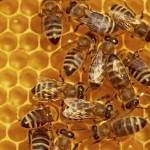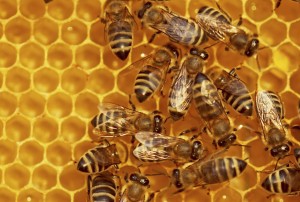Bee Safety Tips This Summer

As we approach the warm, humid days of summer, we know bees are on their way. We’ve already seen them outside buzzing around; however, the worst has yet to come! There is a strict protocol one should follow when evaluate the Do’s and Don’ts to Bee Safety. Fortunately for you, we’ve provided them below!

Honey Bees
Do’s and Don’ts
DO check your property regularly for bee colonies. Honey bees nest in a wide variety of places, especially Africanized honey bees. Check animal burrows, water meter boxes, overturned flower pots, trees and shrubs.
DO keep pets and children indoors when using weed eaters, hedge clippers, tractor power mowers, chain saws, etc. Attacks frequently occur when a person is mowing the lawn or pruning shrubs and they inadvertently strike a bee’s nest.
DO avoid excessive motion when near a colony. Bees are much more likely to respond to an object in motion than a stationary one.
DON’T pen, tie or tether animals near bee hives or nests.
DON’T destroy bee colonies or hive, especially with pesticides. Honey bees are a vital link to U.S. agriculture. Each year, pollination by honey bees adds at least $10 billion to the value of more than 90 crops. They also produce about $150 million worth of honey each year.
DON’T remove bees yourself. If you want bees removed, look in the yellow pages under “bee removal” or “beekeepers”.
DON’T try to exterminate the bees yourself. Most people do not have the necessary safety equipment to remove bees. Past attempts of people trying to exterminate bees themselves have led to serious injury and death in some cases in the United States. This is extremely dangerous and you are advised to leave this to a professional exterminator.
DON’T Cover your face in bees!
What to do if you are attacked
1. Run as quickly as you can away from the bees. Do not flail or swing your arms at them, as this may further annoy them.
2. Because bees target the head and eyes, cover your head as much as you can without slowing your escape.
3. Get to the shelter or closest house or car as quickly as possible. Don’t worry if a few bees become trapped in your home. If several bees follow you into your car, drive about a quarter of a mile and let the bees out of the car.
For professional Bee Control or other Stinging Insects, call Green Pest Solutions for any information you may need. If you think your home or property has an Insect infestation call today or fill out a free in-home evaluation form!